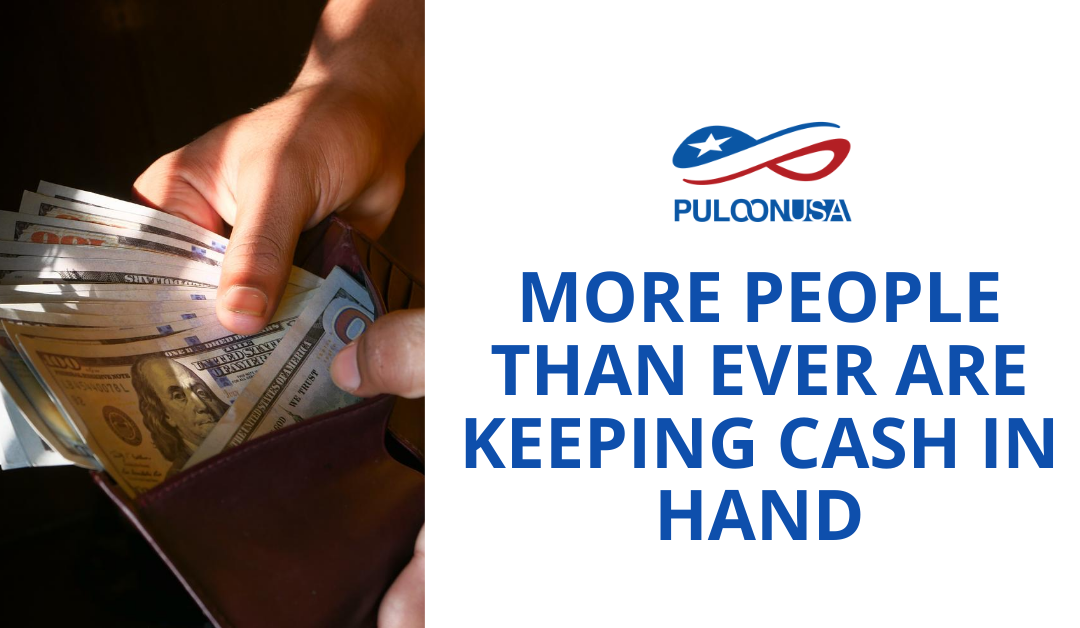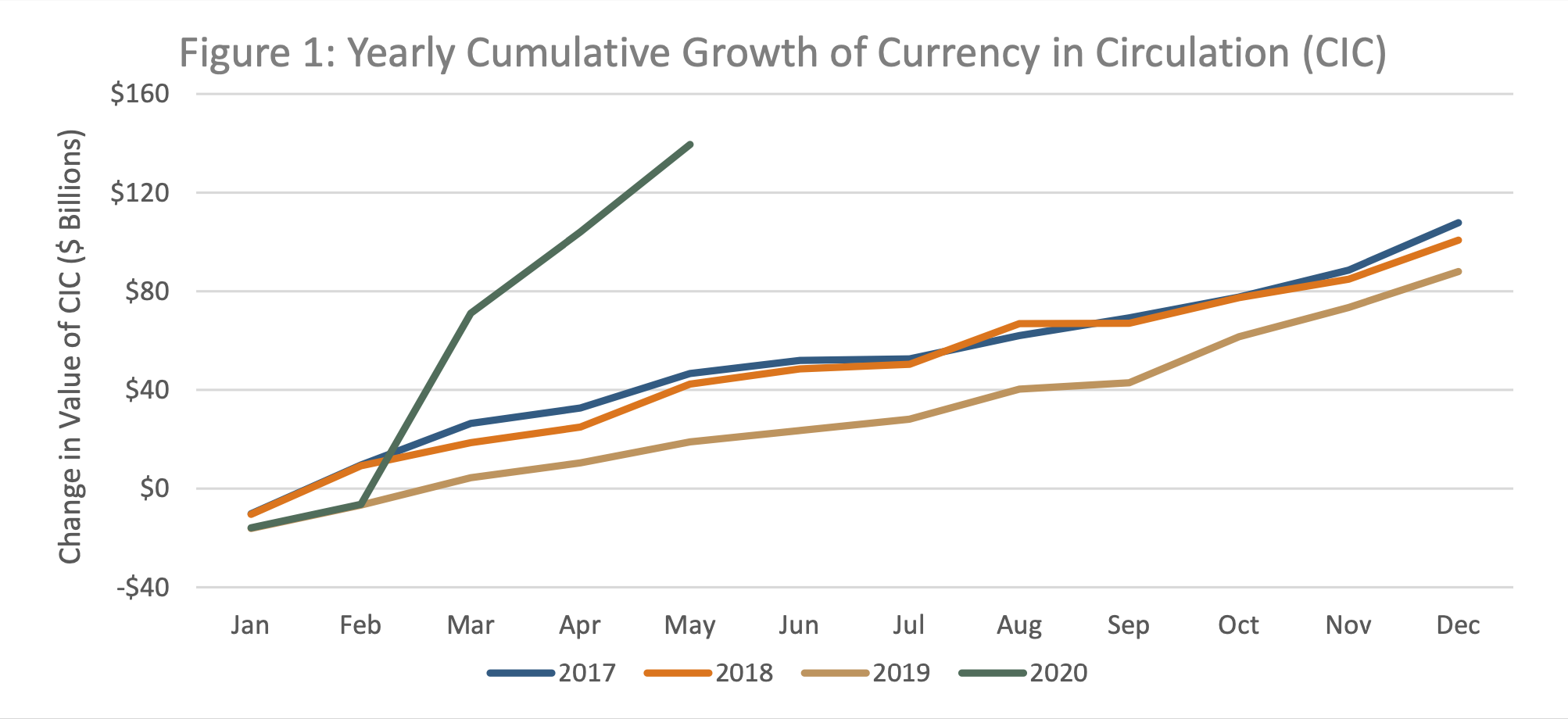In October 2019, the Federal Reserve reached out to participants to conduct its sixth Diary of Consumer Payment Choice (Diary), which was published in late July 2020. According to the Federal Reserve Bank of San Francisco the study, “is an ongoing annual research effort conducted by the Federal Reserve to better understand payment habits of the U.S. population. This paper highlights findings from the sixth Diary study in 2019, and the fourth conducted annually in the month of October since 20161. A demographically-representative sample of 3,016 individuals from the Understanding America survey panel were asked to participate. Each individual was instructed to report all of their payments and transactions over an assigned, consecutive three-day period.
However, since the survey was conducted before the global COVID-19 pandemic first hit our shores, the Cash Product Office (CPO) decided to reach out again to participants to capture data reflective of how the pandemic has affected individual participants’ payment behavior. So, also at the end of July 2020, the Federal Reserve also published Consumer Payments and the COVID-19 Pandemic: A Supplement to the 2020 Findings from the Diary of Consumer Payment Choice.
The follow-up survey asked 10 COVID-19-related spending behavior questions of the same 3,016 individuals who participated in the October 2019 survey. Of those, the CPO received 2,737 responses. The questions asked in the survey concentrated on three general themes: cash holdings, changes in payment behavior, and cash avoidance.
An Increase in Cash
When asked if participants generally increased their cash on-hand amount during the pandemic, the findings indicated that, “On average, the amount of cash people carry increased from $69 to $81, a 17 percent increase from the pre-pandemic amount reported in the 2019 Diary (Figure 2). Holdings increased by 71 percent to $125 for individuals who withdrew extra cash and by 10 percent to $77 for those who did not withdraw extra cash.
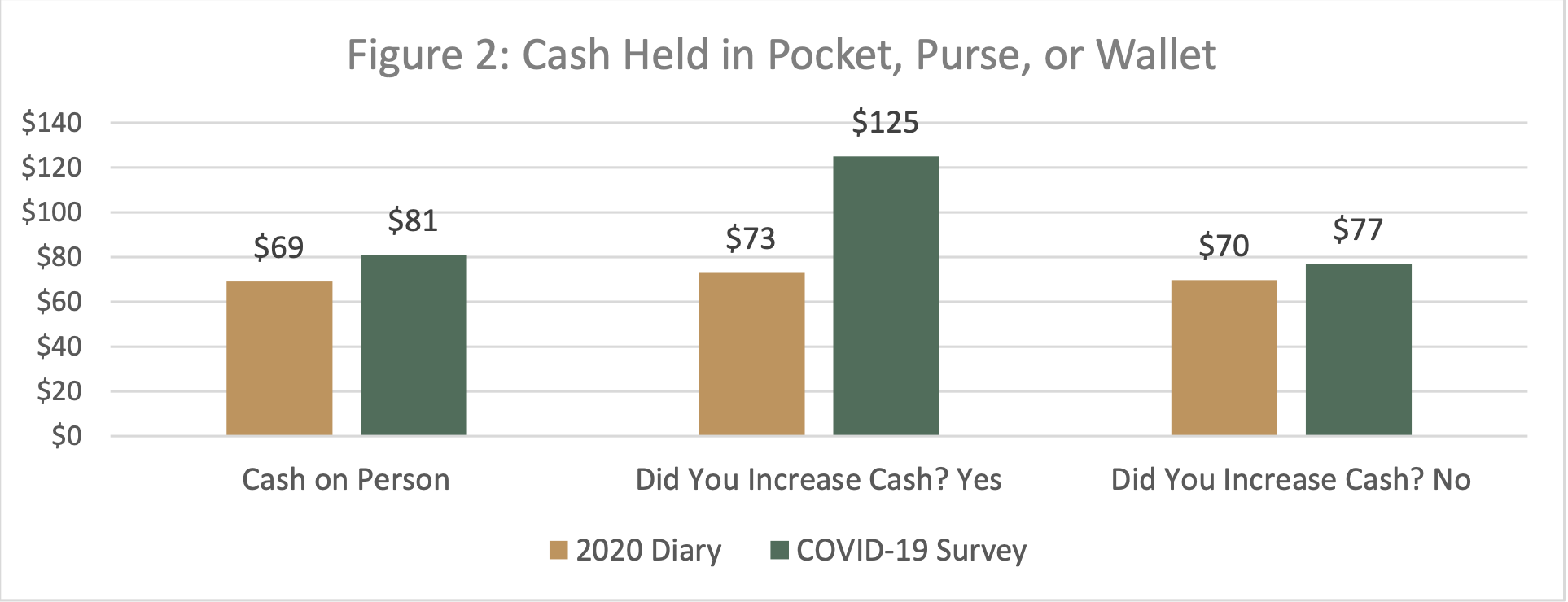
Participants were also asked if they had increased their cash amount stored elsewhere, for example at home or at their office. For all participants, the amount of cash stored elsewhere was greater than pre-COVID-19 levels. “On average, cash stored elsewhere nearly doubled, rising from $257 to $483 (Figure 3). Those who withdrew extra cash increased their holdings by 426 percent, jumping from $178 to $937, and those who did not withdraw extra cash increased their holdings by 58 percent, rising from $275 to $436.”
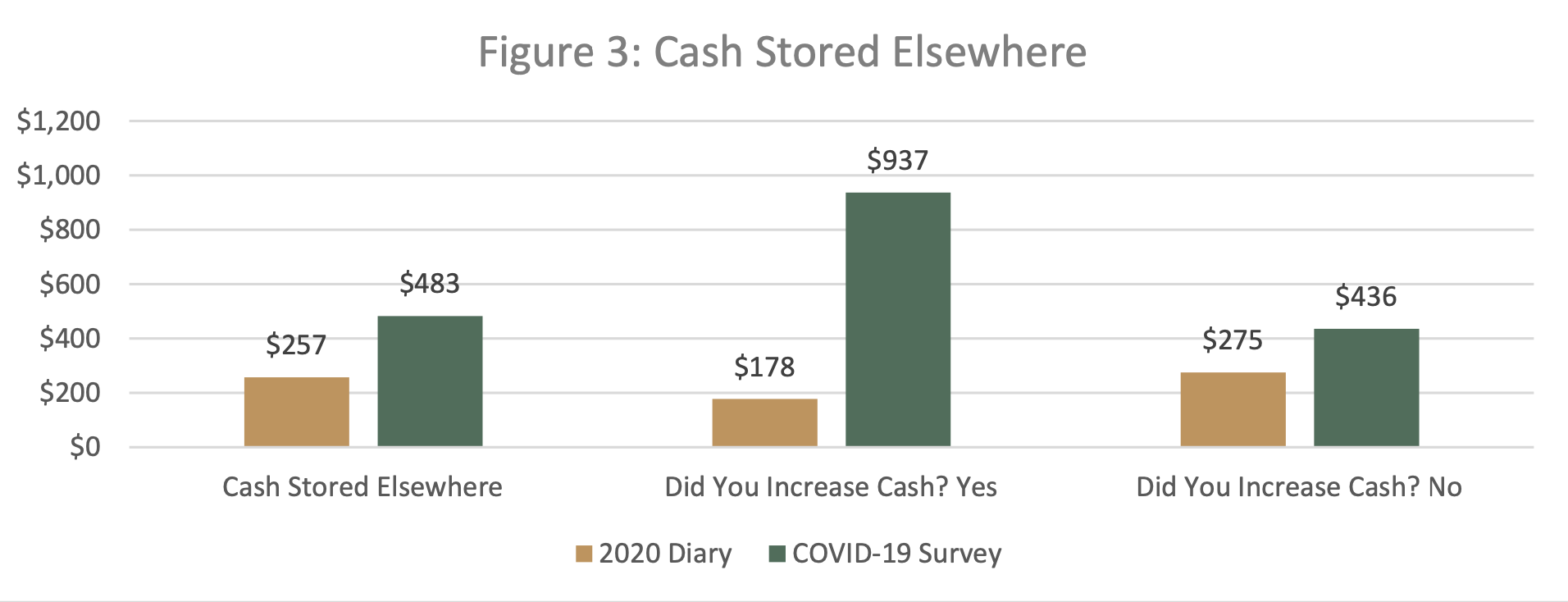
Additionally, survey respondents largely responded that they had not made any in-person payments since early March. “Of the individuals who reported making in-person payments, 59 percent used cash at least once, a similar rate to the 57 percent of individuals who used cash at least once in the 2019 Diary (Figure 5). The similar rate at which cash is being used in person suggests that stories on the erosion of payment preferences during the pandemic may be overstated.”
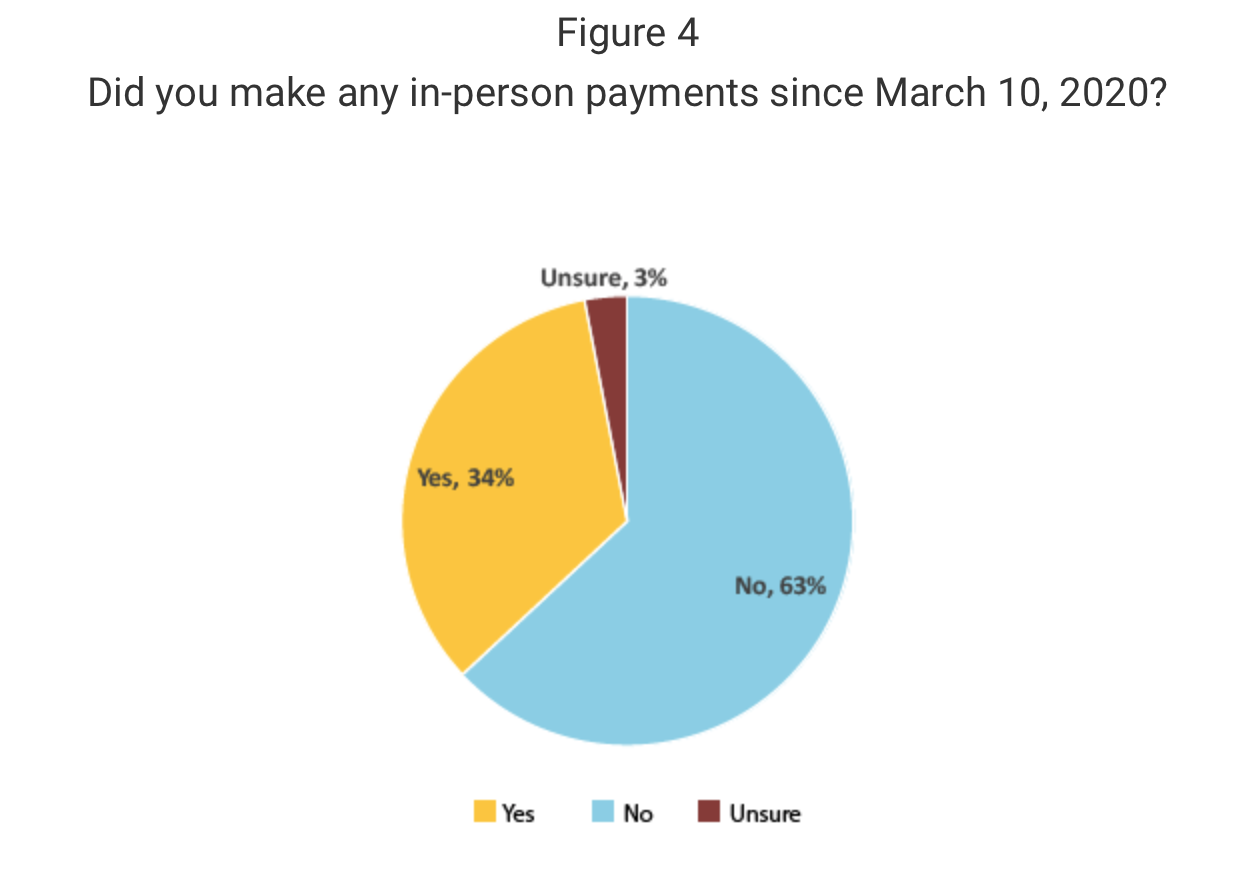
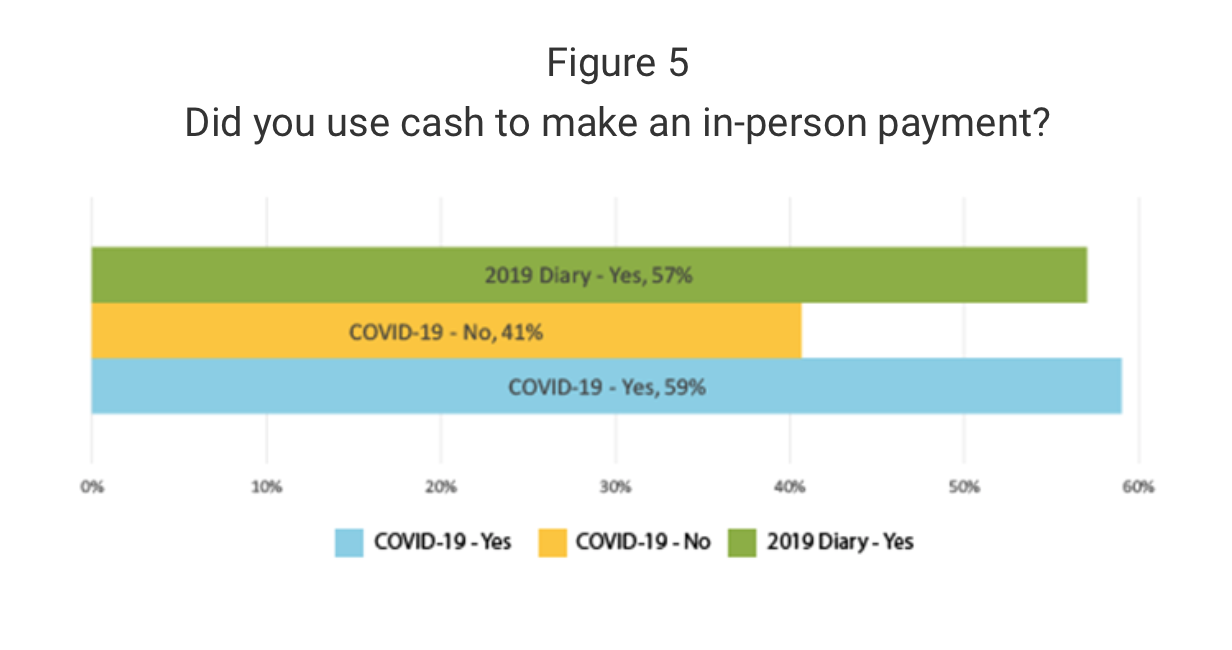
When asked if they were actively avoiding using cash, respondents largely responded no.
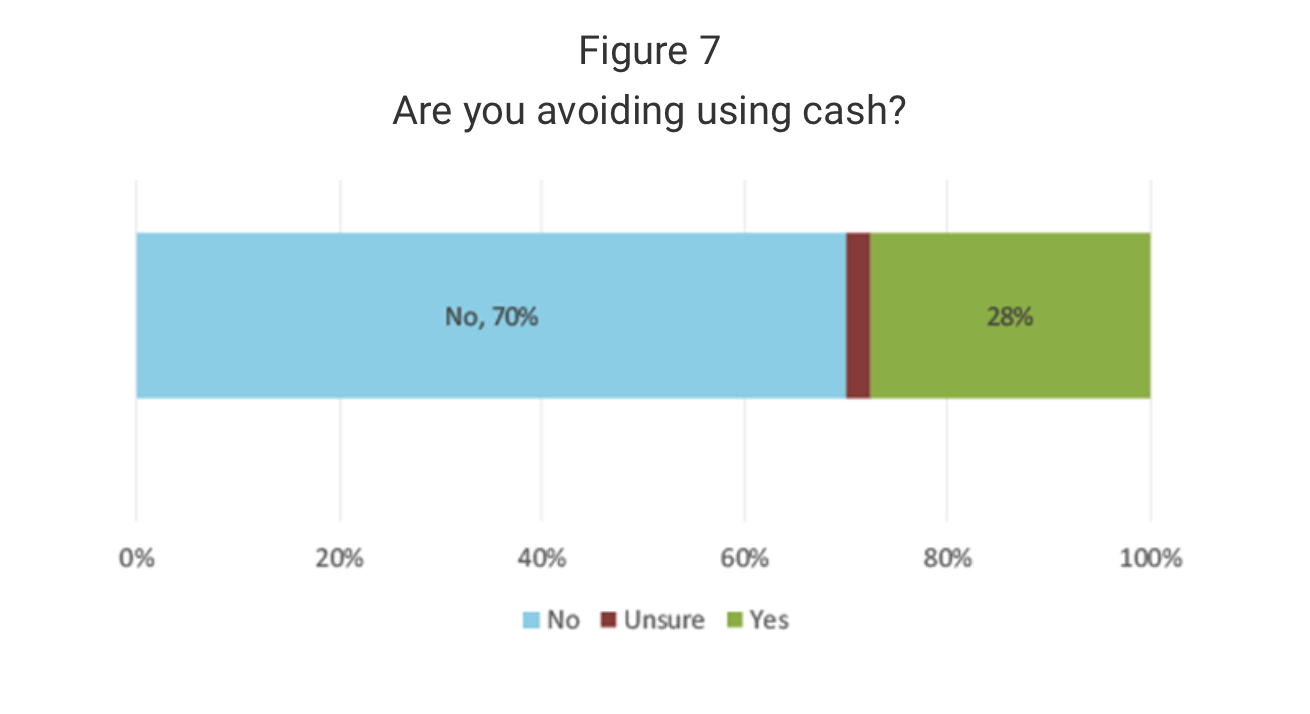
In its conclusion the Federal Reserve stated, “It is unknowable whether consumers’ payment behaviors will change permanently as a result of the pandemic. Our current information demonstrates that transactional use of cash has decreased and its role as a store of value has increased, while domestic and international demand continues to substantially increase.”
The October 2020 edition of the survey will likely result in a better understanding of how U.S. residents are making payments and handling cash.

